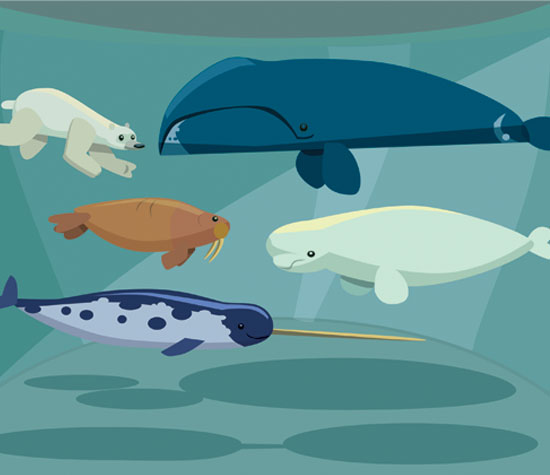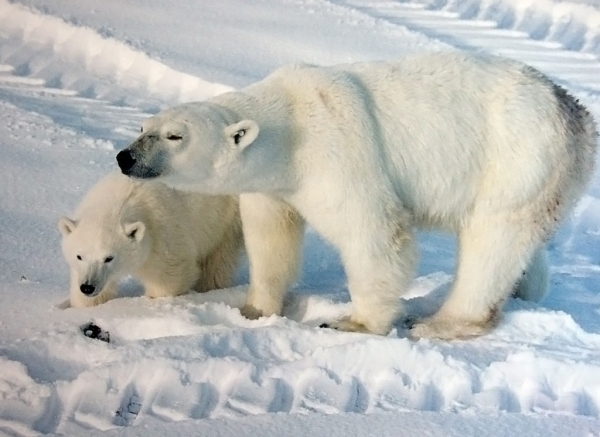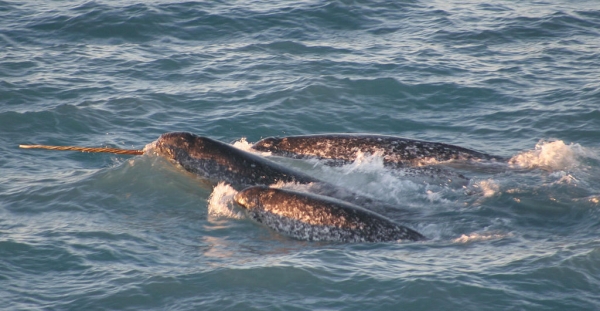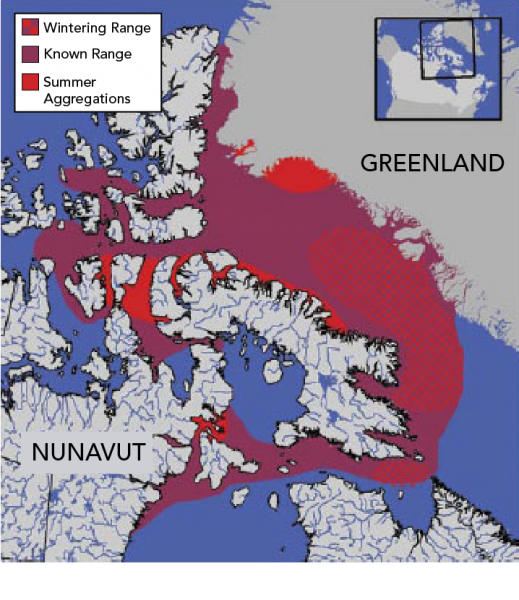How are Arctic Animals in Canada Affected by Climate Change?

Narwhals, polar bears and other common Arctic animals swim in the Arctic waters. Image © id-work, iStock

Narwhals, polar bears and other common Arctic animals swim in the Arctic waters. Image © id-work, iStock
6.8
How does this align with my curriculum?
Curriculum Alignment
BC
9
Science Grade 9 (June 2016)
Big Idea: The biosphere, geosphere, hydrosphere, and atmosphere are interconnected, as matter cycles and energy flows through them.
BC
11
Earth Sciences 11 (June 2018
Big Idea: The transfer of energy through the atmosphere creates weather and is affected by climate change.
BC
11
Science for Citizens 11 (June 2018)
Big Idea: Scientific understanding enables humans to respond and adapt to changes locally and globally.
BC
12
Environmental Science 12 (June 2018)
Big Idea: Human activities cause changes in the global climate system.
NS
8
Science Grade 8 (2020)
Learners will evaluate oceanographic and other evidence of climate change inclusive of a Mi’kmaw perspective.
ON
11
Environmental Science, Grade 11, University/College (SVN3M)
Strand B: Scientific solutions to Contemporary environmental Challenges
YT
11
Earth Sciences 11 (British Columbia, June 2018
Big Idea: The transfer of energy through the atmosphere creates weather and is affected by climate change.
YT
12
Environmental Science 12 (British Columbia, June 2018)
Big Idea: Human activities cause changes in the global climate system.
YT
11
Science for Citizens 11 (British Columbia, June 2018)
Big Idea: Scientific understanding enables humans to respond and adapt to changes locally and globally.
YT
9
Science Grade 9 (British Columbia, June 2016)
Big Idea: The biosphere, geosphere, hydrosphere, and atmosphere are interconnected, as matter cycles and energy flows through them.
AB
5
Science 5 (2023)
Earth Systems: Understandings of the living world, Earth, and space are deepened by investigating natural systems and their interactions.
AB
6
Science 6 (2023)
Earth Systems: Understandings of the living world, Earth, and space are deepened by investigating natural systems and their interactions.
AB
10
Knowledge and Employability Science 10-4 (2006)
Unit D: Investigating Matter and Energy in Environmental Systems
AB
10
Science 14 (2003, Updated 2014)
Unit D: Investigating Matter and Energy in Environmental Systems
BC
11
Environmental Science 11 (June 2018)
Big Idea: Changing ecosystems are maintained by natural processes.
NS
7
Science Grade 7 (2020)
Learners will analyse the interconnectiveness of living things and the environment, in relation to the concept of Netukulimk.
NU
10
Knowledge and Employability Science 10-4 (2006)
Unit D: Investigating Matter and Energy in Environmental Systems
NU
10
Science 14 (2003, Updated 2014)
Unit D: Investigating Matter and Energy in Environmental Systems
YT
11
Environmental Science 11 (British Columbia, June 2018)
Big Idea: Changing ecosystems are maintained by natural processes.
NT
10
Knowledge and Employability Science 10-4 (Alberta, 2006)
Unit D: Investigating Matter and Energy in Environmental Systems
NT
10
Science 14 (Alberta, 2003, Updated 2014)
Unit D: Investigating Matter and Energy in Environmental Systems
AB
6
Science 6 (2023)
Living Systems: Understandings of the living world, Earth, and space are deepened by investigating natural systems and their interactions.
NU
10
Experiential Science 10 - Terrestrial Systems
Unit 4: Resource Management and Population Dynamics


